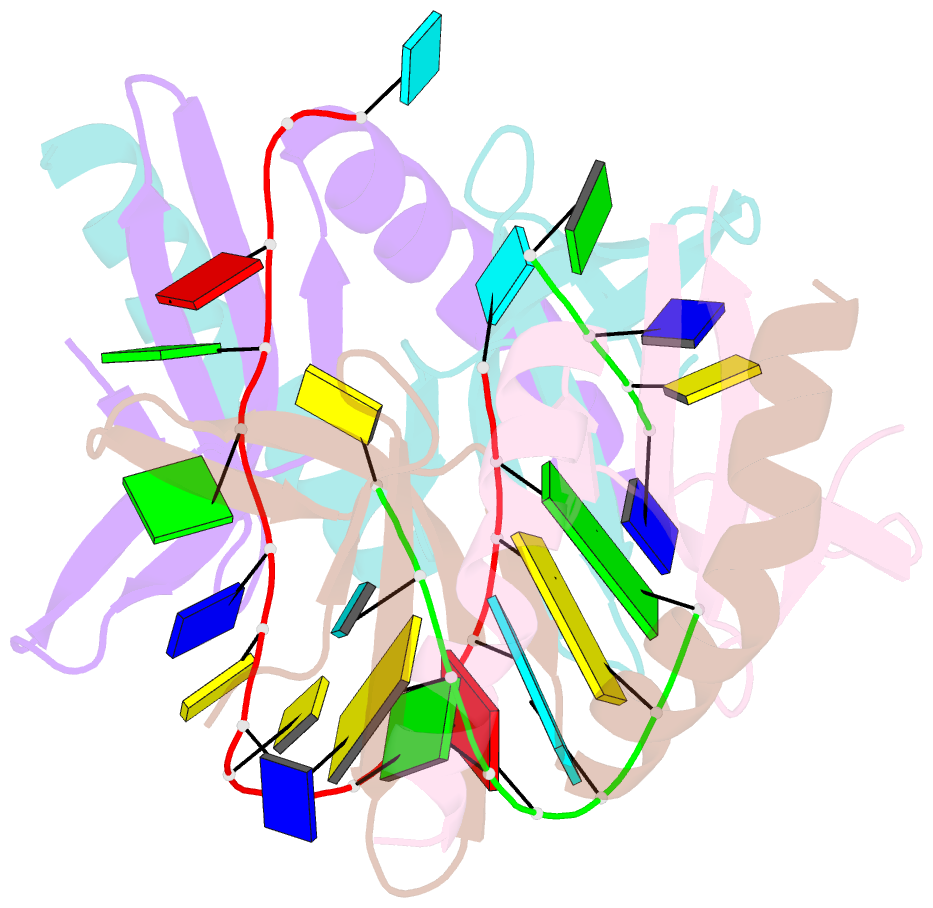Summary information and primary citation
- PDB-id
- 6ycs; SNAP-derived features in text and JSON formats;
DNAproDB
- Class
- transcription
- Method
- X-ray (3.05 Å)
- Summary
- Human transcription cofactor pc4 DNA-binding domain in complex with full phosphorothioate 5-10-5 2'-o-methyl DNA gapmer antisense oligonucleotide.
- Reference
- Hyjek-Skladanowska M, Vickers TA, Napiorkowska A, Anderson BA, Tanowitz M, Crooke ST, Liang XH, Seth PP, Nowotny M (2020): "Origins of the Increased Affinity of Phosphorothioate-Modified Therapeutic Nucleic Acids for Proteins." J.Am.Chem.Soc., 142, 7456-7468. doi: 10.1021/jacs.9b13524.
- Abstract
- The phosphorothioate backbone modification (PS) is one of the most widely used chemical modifications for enhancing the drug-like properties of nucleic acid-based drugs, including antisense oligonucleotides (ASOs). PS-modified nucleic acid therapeutics show improved metabolic stability from nuclease-mediated degradation and exhibit enhanced interactions with plasma, cell-surface, and intracellular proteins, which facilitates their tissue distribution and cellular uptake in animals. However, little is known about the structural basis of the interactions of PS nucleic acids with proteins. Here, we report a crystal structure of the DNA-binding domain of a model ASO-binding protein PC4, in complex with a full PS 2'-OMe DNA gapmer ASO. To our knowledge this is the first structure of a complex between a protein and fully PS nucleic acid. Each PC4 dimer comprises two DNA-binding interfaces. In the structure one interface binds the 5'-terminal 2'-OMe PS flank of the ASO, while the other interface binds the regular PS DNA central part in the opposite polarity. As a result, the ASO forms a hairpin-like structure. ASO binding also induces the formation of a dimer of dimers of PC4, which is stabilized by base pairing between homologous regions of the ASOs bound by each dimer of PC4. The protein interacts with the PS nucleic acid through a network of electrostatic and hydrophobic interactions, which provides insights into the origins for the enhanced affinity of PS for proteins. The importance of these contacts was further confirmed in a NanoBRET binding assay using a Nano luciferase tagged PC4 acting as the BRET donor, to a fluorescently conjugated ASO acting as the BRET acceptor. Overall, our results provide insights into the molecular forces that govern the interactions of PS ASOs with cellular proteins and provide a potential model for how these interactions can template protein-protein interactions causative of cellular toxicity.





